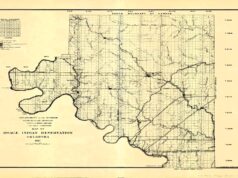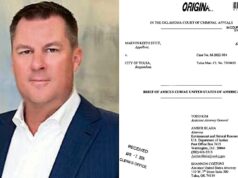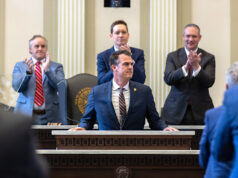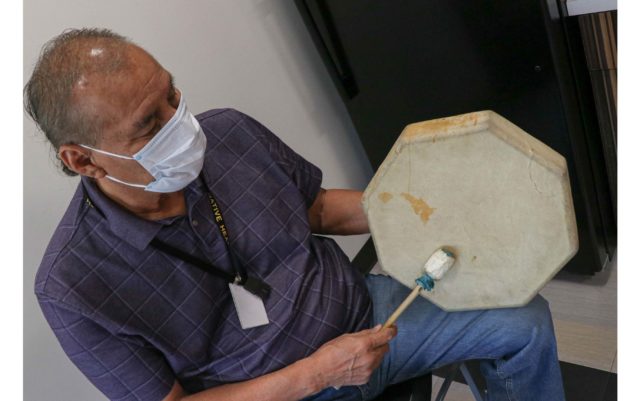

PHOENIX — For the Pascua Yaqui Tribe of Arizona, the Easter holidays normally are filled with traditional ceremonies. When COVID-19 put much of the country into quarantine last year, many feared the ceremonies would be canceled.
However, starting last June, Arizona State University and the Phoenix nonprofit clinic Native Health started a virtual talking circle series in order to help people endure their problems and find healing.
One tribal citizen who has participated is Angela Burks, who was seeking support last year as she coped with her husband’s failing health because of struggles with alcohol.
Burks remembers hearing about COVID-19 reaching the U.S. right before Ash Wednesday last year.
“It was hard knowing our community wasn’t doing what it needed to feel spiritually well,” said Burks, 31, a graduate student in social work at Arizona State University. “And, on top of that, I wasn’t well.”
This story was reported by Cronkite News, a news division with Arizona PBS. CN is partnered Gaylord News, a Washington reporting project of the Gaylord College of Journalism and Mass Communication at the University of Oklahoma.
When ASU and Native Health started the virtual talking circle series, Burks quickly became one of its regulars, finding solace in a space where she could be vulnerable with other Indigenous students in a culturally appropriate way.
Almost every week for the past year, the group of about 10 students, most of them Indigenous, have gathered on Zoom to participate in a traditional healing practice adapted for the digital age and for a pandemic that pushed most personal interactions online.
For centuries, Native Americans have used talking circles to solve problems and provide healing. Every circle is a little different, depending on the practices of a particular tribe.
Generally, a circle includes opening and closing blessings, the burning of cedar sage as a cleansing ritual, songs, storytelling and an opportunity for each participant to speak. Participants sit in a circle, passing a sacred item, such as a talking stick or an eagle feather, meant to serve as a direct connection to a higher power.
It’s about helping an individual “create a balance within their mind, body, spirit and with their surroundings,” said Roy Johnston, a Choctaw traditional specialist who has worked with Native Health for more than 15 years. “In that balance, their body is allowed and their mind is allowed to begin its work to heal.”
Talking circles used as health care treatment
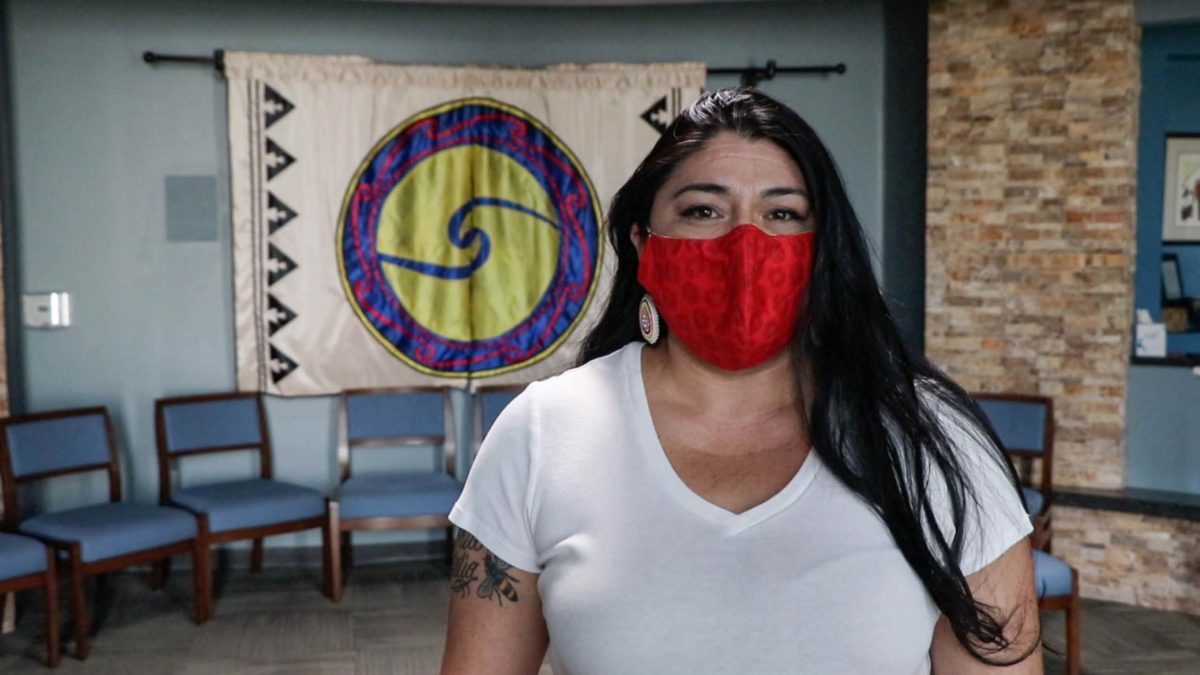
Incorporating Indigenous practices like talking circles into health care treatment isn’t new but has grown during the pandemic, largely because of the disproportionate impact of COVID-19 on Native communities.
The Navajo Nation — whose reservation is the largest in the U.S., stretching across parts of Arizona, New Mexico and Utah — was hit especially hard. More than 1,300 of the reservation’s 170,000 residents have died from COVID-19.
Throughout the Southwest, organizations that serve Indigenous communities have worked to keep talking circles going through the pandemic.
Andrea Klimas is the clinical director and a talking circle facilitator at Phoenix’s Native American Connections, which provides health care and community development services.
Klimas’ talking circles offer support to clients who seek residential or outpatient treatment for substance abuse or behavioral health concerns. The organization’s Patina Wellness Center has a room dedicated to talking circles, with cushioned chairs placed beneath a circular skylight that shines onto a wooden floor, used as an altar during the practice. Weekly circles continued over the past year, with social distancing and mask requirements in place.
Studies have shown that incorporating talking circles into primary care can help improve symptoms and quality of life.
Even with modifications made for COVID-19, Klimas still leads her circles the way she usually does. She sets up an altar with items representing earth, fire, wind and water.
Klimas always starts with a smudging prayer — the burning of dried herbs, which she said provides a “calming perspective.” She also brings an eagle feather, which each participant holds while sharing; it serves as a “telephone line” to whatever higher power the speaker seeks to communicate with.
She starts and ends her circles with affirmations.
“I’m strong, I’m teachable, I’m lovable, I’m worthy,” she often tells women. And for groups of mostly men, she might offer: “I’m humble, I can be that protector, I can walk away from a challenge that can lead me to further troubles.”
Students find comfort
In Denver, the Colorado Coalition for the Homeless introduced a series of outdoor talking circles at a park last year. Before the pandemic, Teresa Bernie, an Ihanktonwan Nakota talking circle facilitator, held sessions three days a week for as many as 25 people. Going virtual wasn’t a viable option for the population she works with, Bernie said.
“People loved that we could still gather,” she said. “Because we’re urban, we gather to stay connected to our culture, and that means gathering to share food and prayer and just to visit and keep close connections with one another.”
Johnston, of Native Health, has helped facilitate the virtual talking circle with ASU students. The process is much the same online: The circle starts with a greeting and the purification ritual of smudging with cedar sage — and includes prayers, songs, storytelling and individual sharing.
Native Health has been mailing sage bundles to circle participants who request them. And in place of a traditional water blessing at the end, the Zoom participants each drink a glass of water.
Catalina Alvarez Flores, 24, a member of the Pascua Yaqui Tribe, joined after losing her aunt to COVID-19, along with some elders she had known since she was young.
“I didn’t really know how to cope because of so much going on in the world,” said Flores, who studies anthropology and family and human development. “You’re constantly seeing things in the media — how many deaths per day, a lot of negativity.”
“I wanted to find a place that had kind of an Indigenous perspective to talk about these issues, especially with a lot of Indigenous communities being affected by the pandemic in higher numbers.”
Johnston initially was skeptical about leading circles virtually. “I just don’t do things like that,” he recalled saying when he was first approached. But the work has made for meaningful experiences and conversations.
He said when the time comes for individual sharing, frequent topics include loss, isolation, sadness, students being separated from or locked down on reservations or contracting COVID-19 themselves.
Beyond concerns about the pandemic, the circle offers a chance to talk about issues that are likely best understood by other Indigenous people, said Tony Velarde, 24, of Chandler, a member of the Jicarilla Apache Nation who’s studying political science.
“I could just keep coming back and be like, ‘Guys, this is the thing and this sucks and I just want to share it with you,’” Velarde said. “Especially if the issue was particularly because you were Native, there weren’t a lot of other places you could share that information, where people would understand it to that degree.”
Laura Gonzales-Macias, interim director of ASU’s American Indian Student Support Services, described the talking circle as a “gathering of a safe space, a place that recognizes there have been some devastating impacts in tribal communities.”
“We were hearing from students, particularly those in the urban area who are from reservations, that their homes were on lockdown due to COVID,” Gonzales-Macias said. “They couldn’t get home to do a ceremony or a gathering. This was an avenue for them to do that while staying here.”
Kayla-Rae Wakeland, Native Health’s substance abuse and suicide prevention case manager, has seen firsthand the mental health benefits of these gatherings. She participates in the ASU circles, alongside Johnston. For some of the students, it’s their first time interacting with a mental health provider, she said.
“To be able to have that guidance and having their peers say it’s OK, and knowing that they do need more help, it really helped them push themselves to start receiving behavioral health services,” Wakeland said.
ASU’s virtual talking circles are continuing this summer. Gonzales-Macias said she hopes to eventually introduce an in-person circle.
For Klimas and other facilitators, it’s heartening to see talking circles used in new ways. There was a time, she recalled, when her Oglala Lakota ancestors practiced such traditions only in hiding, because of religious persecution.
She considers their growing popularity an answer to her grandparents’ prayers that Indigenous traditions would one day be a source of pride, not shame.
“They may not have been held the way they were held 200 years ago,” Klimas said. “But, because of their resilience, these are ways that have not been forgotten about.”










